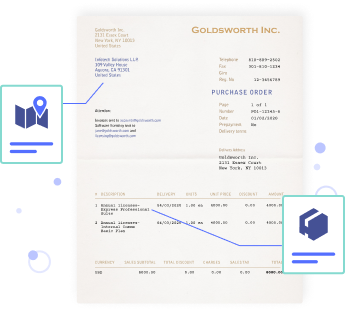
[ad_1]
The global construction industry is witnessing a rapid rise in new technologies that are leading to construction automation: drones, robots, augmented and virtual reality, 3D printed buildings, Artificial Intelligence and Machine-Learning, to name a few. Many of the Machine-Learning and AI algorithms house the capability to disrupt the construction industry.
“Due to the pandemic, three years of construction technology growth and adoption have been compressed into the past nine months. The technology categories that recorded the most growth due to the pandemic have been digital collaboration platforms, virtual scanning tools, and safety-focused wearables. “
Henry D’Esposito, Construction Research, Senior Analyst, JLL Inc.
Machine learning and Artificial Intelligence (AI) have shaken up the construction industry — an example being the introduction of Optical Character Recognition (OCR) as a construction software, resulting in increased efficiencies and reduced costs.
The construction industry has been progressively adopting data in construction operations — contributing to better job site safety, improved decisions, reduced risks, and boosted productivity.
When it comes to implementing construction automation, digitizing construction documents tends to get overlooked. Construction documents are a small but essential part of the entire project.
Manually feeding in construction documents is a time-consuming and tedious process prone to (a lot of) clerical errors. These slow, repetitive tasks performed on a day-to-day basis eat away at your employees’ productivity, and the company’s resources.
Improve Efficiency with Digital Documents
Physical construction documents come with a lot of challenges. These documents can get damaged, misplaced, and sometimes, are not accessible for other people or at different locations. Not to forget the added risk it carries of spreading communicable diseases in the context of the current global pandemic.
Digital construction documents, on the other hand, are stored in a cloud database and can be made available on any electronic device at any location, solving all the issues at once. Along with that, digital construction documents are easier to organize and search through.
Image Source: https://www.rakenapp.com/blog/create-a-construction-daily-report-example
OCR is finding favor in the realm of construction document management.
OCR technology uses electronic devices to scan printed characters, determine their shape by detecting edge information, and translate those shapes into computer-readable characters by character recognition. (Source: Springer Link)
Save Time and Cost with Automation
Accuracy of OCR has increased close to 95%, giving it an upper hand over manually entered data. Using OCR technology as your construction software for documents, offers benefits such as:
- Decreased labor costs
- Reduction in cycle time
- Higher efficiency
OCR is undergoing a quiet revolution as software vendors integrate them with AI algorithms. As a result, it is parallelly capturing and comprehending the content — AI tools can check for mistakes independent of a human-user providing streamlined fault management. (Source: Information Age)
Automating Accounts Payable with OCR Technology
A lot of companies are using OCR software to automate their Accounts Payable (AP) process, reduce the need for manual intervention, and aid the company’s growth. OCR can read and extract information from the invoice and purchase orders, and submit it in the system. Automating your accounts payable process can help you:
- Streamline accounts payable process
- Eliminate manual errors
- Improve the efficiency of your finance team
Easily Manage Construction Documents with OCR
By depending on manual processes and legacy IT systems, companies in the construction industry have hindered their growth.
Digital data processing uses automated workflows to map out all the data to improve its evaluation and analytics capabilities. Establishing a software like OCR into your workflow for invoices, daily reports, or even contract documents does not require your finance team or managers to understand the nuances of image processing, pattern recognition, or OCR algorithms.
Here’s how it works: The optical recognition software scans construction documents, then extracts the text and converts it into TXT, DOC, or PDF files. OCR makes it easy to share, access, and store data. It mitigates the administrative load on your employees so they can focus on other critical things. This translates to better project delivery and customer experience.
Image source:https://www.doctemplates.net/construction-invoice-templates/
As important as it is to search for a record, sometimes a user may need to be able to search for attachments just as easily. Once the document has been put through the OCR tool, the system converts the document into text format, compared to its original image based state. Only then, the attachment will become searchable in the contract management system.
With the help of OCR, employees can search for contracts saved in the system and even check for specific contracts nearing their expiry. Items from contracts in the system such as vendor information, a deal value can be copy-pasted and added to a report. OCR removes the chances of manual errors while typing in this data into the system.
Image source:https://debitoor.com/blog/invoicing-software-for-freelance-architects
Many companies are not able to efficiently handle contracts, invoices, or reports because they can be in different formats (PDFs or printed), stashed in the wrong folder (physical or digital), or misplaced in the system itself.
OCR solutions can help by not only digitizing all construction documents across a range of different formats, but also create a data landscape to make searchable text files to match keywords and phrases of these documents. Making the switch to OCR to manage all your construction documents gives you a streamlined process for managing all documents, synchronizing data, and removing the pain of manual tasks.
Image banner source: https://www.meed.com/ai-machine-learning-urban-cities
Start using Nanonets for Automation
Try out the model or request a demo today!
TRY NOW

[ad_2]
Source link